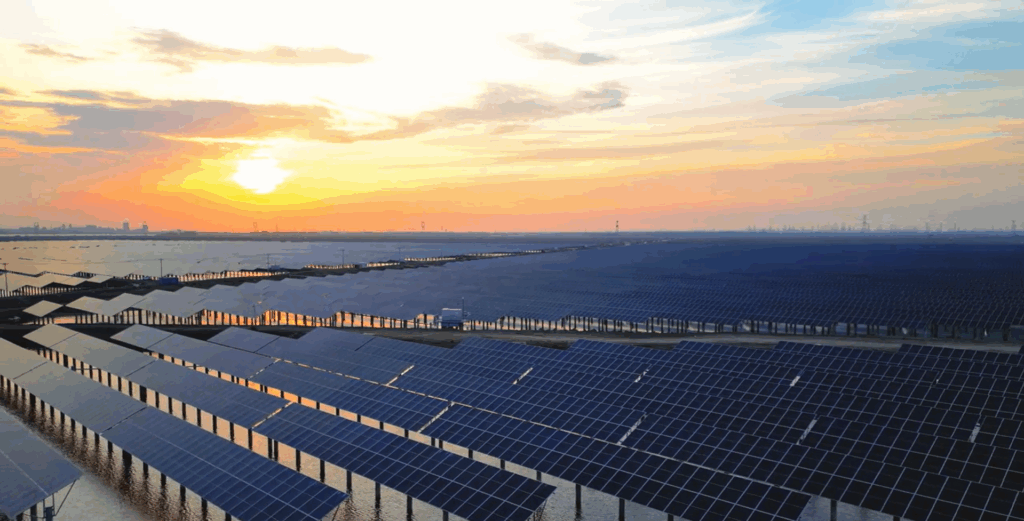Key Takeaways
- Dajin Heavy Industry’s 250 MW fishery-solar hybrid project in Tangshan, China, is now operational.
- The project integrates solar energy generation with aquaculture on 353 hectares and aims to improve land use and environmental sustainability.
- It is expected to produce 400 million kWh of clean electricity annually, significantly reducing coal use and carbon emissions.
Project Overview
Dajin Heavy Industry, based in Beijing, has officially launched its 250 MW Shilihai fishery-solar hybrid photovoltaic project in Tangshan, Hebei Province. This innovative project employs a dual-use strategy, with solar panels installed above fish ponds, encompassing an area of approximately 353 hectares. It features 370,000 bifacial solar panels designed to optimize solar energy conversion while maintaining productive fishery operations.
The company emphasizes that the project’s design aims to enhance land-use efficiency and generate both economic and environmental advantages. Dajin Heavy Industry estimates that the facility will produce around 400 million kilowatt-hours of clean electricity each year, which is equivalent to saving 120,000 tons of standard coal. Additionally, it is expected to cut carbon dioxide emissions by approximately 320,000 tons, contributing to improved local air quality.
Dajin Heavy Industry views this project as part of its wider strategy to increase investments across the renewable energy sector. The company is building on its established leadership in offshore wind foundation manufacturing to accelerate development initiatives across the renewable energy value chain.
The company’s commitment to expansion reflects its dedication to enabling the global energy transition. Dajin emphasizes that its efforts are focused on fostering innovations that lead to a net-zero future, further solidifying its role in renewable energy advancements.
Overall, this project showcases the potential of integrating aquaculture with solar energy, highlighting Dajin Heavy Industry’s innovative approach to addressing environmental challenges while promoting economic growth through sustainability.
The content above is a summary. For more details, see the source article.















